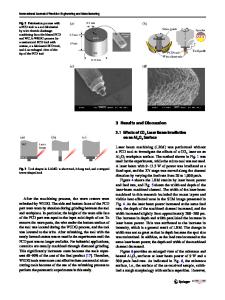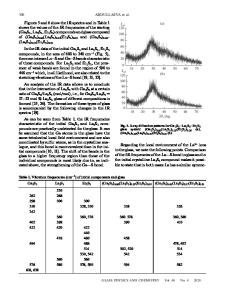Investigation of point-contact Andreev reflection on magnetic Weyl semimetal Co 3 Sn 2 S 2
- PDF / 1,828,033 Bytes
- 7 Pages / 595.276 x 793.701 pts Page_size
- 5 Downloads / 352 Views
gust 2020 Vol. 63 No. 8: 287411 https://doi.org/10.1007/s11433-020-1565-6
Investigation of point-contact Andreev reflection on magnetic Weyl semimetal Co3Sn2S2 1†
2†
2
2
2
2
He Wang , YanZhao Liu , HuiBin Zhou , HaoRan Ji , JiaWei Luo , JiaWei Zhang , 2 2 2,3,4 2,3,4,5* TianHeng Wei , PinYuan Wang , Shuang Jia , and Jian Wang 1
Department of Physics, Capital Normal University, Beijing 100048, China; International Center for Quantum Materials, School of Physics, Peking University, Beijing 100871, China; 3 Collaborative Innovation Center of Quantum Matter, Beijing 100871, China; 4 CAS Center for Excellence in Topological Quantum Computation, University of Chinese Academy of Sciences, Beijing 100190, China; 5 Beijing Academy of Quantum Information Sciences, Beijing 100193, China 2
Received January 13, 2020; accepted April 17, 2020; published online June 22, 2020
Magnetic Weyl semimetals (WSMs) with broken time-reversal symmetry (TRS) hosting topological band structures are expected to provide an ideal platform for investigating topological superconductivity and spintronics. However, the experimental verification of magnetic WSMs is very challenging. Very recently, the kagome magnet Co3Sn2S2 was confirmed to be a magnetic WSM by both angle-resolved photoemission spectroscopy and scanning tunneling spectroscopy and consequently has become the focus of great attention. This paper reports a point-contact Andreev-reflection spectroscopy (PCARS) investigation on the (001) surface and the side surface of the Co3Sn2S2 single crystals, respectively. The measurements from the sample’s (001) and side surfaces provide experimental evidence for transport spin polarization in the Co3Sn2S2 magnetic WSM. Furthermore, the superconducting proximity effect in the Co3Sn2S2 single crystal is successfully detected. The point-contact spectra (PCS) along the in-plane direction cannot be well fitted by theoretical models based on s-wave pairing, indicating that possible triplet p-wave superconductivity may be triggered at the interface, which paves the way for the future exploration of the topological superconductivity and Majorana states in broken TRS WSMs. magnetic Weyl semimetal, point contact, pairing symmetry, superconducting proximity effect PACS number(s): 03.65.Vf, 74.80.Fp, 74.20.Rp, 74.45.+c Citation:
H. Wang, Y. Z. Liu, H. B. Zhou, H. R. Ji, J. W. Luo, J. W. Zhang, T. H. Wei, P. Y. Wang, S. Jia, and J. Wang, Investigation of point-contact Andreev reflection on magnetic Weyl semimetal Co3Sn2S2, Sci. China-Phys. Mech. Astron. 63, 287411 (2020), https://doi.org/10.1007/s11433-020-1565-6
1 Introduction The realization of a magnetic Weyl semimetal (WSM) that breaks time-reversal symmetry (TRS) and possesses a topologically nontrivial electronic structure has generated widespread interest in the fields of both materials science and condensed matter physics [1-5]. A magnetic WSM can po*Corresponding author (email: [email protected]) †These authors contributed equally to this work.
tentially be driven via tuning paramet
Data Loading...











